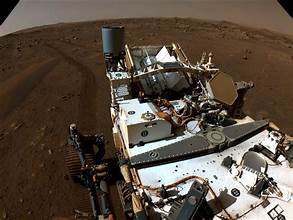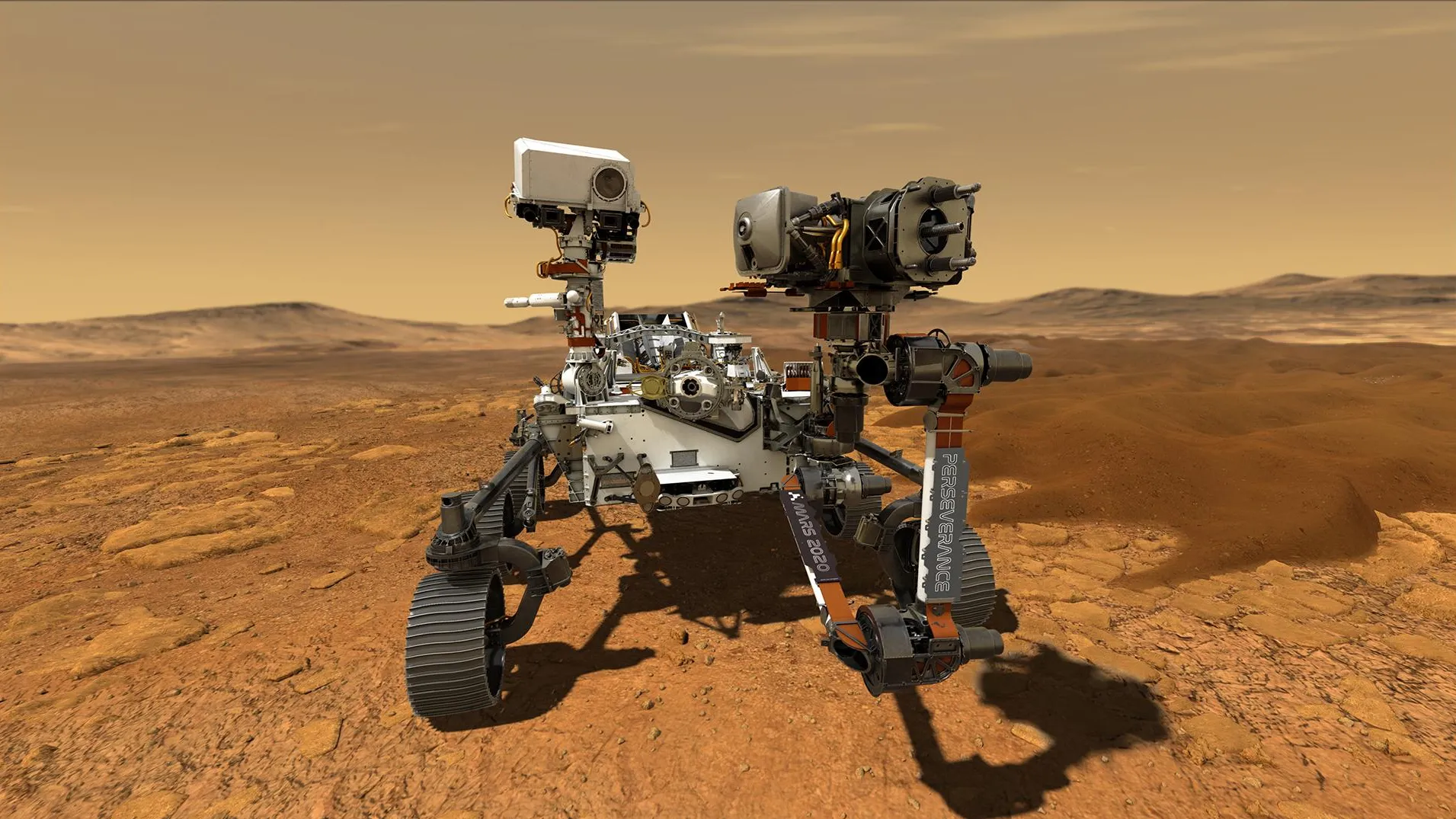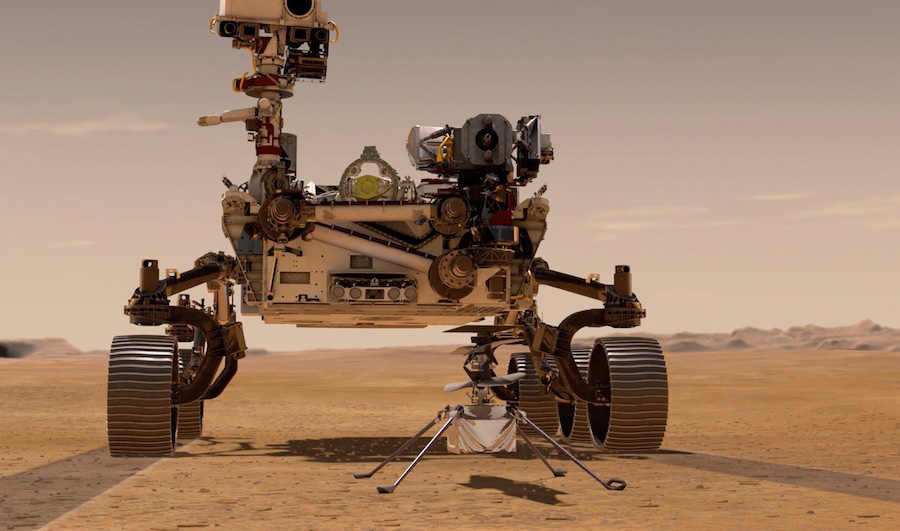
NASA’s Perseverance rover has captivated the world with its groundbreaking achievements on Mars. Launched on July 30, 2020, and landing on the Red Planet on February 18, 2021, Perseverance has already made significant contributions to our understanding of Mars. As it continues its mission, the rover is preparing for its next major milestone: climbing the rim of Mars’ Jezero Crater. This ambitious objective is not only a testament to human ingenuity but also a crucial step toward uncovering the mysteries of Mars. In this article, we will explore the upcoming mission, its scientific goals, and the technological innovations that will drive its success.
1. The Significance of the Jezero Crater
The Jezero Crater, a 28-mile-wide (45 kilometers) depression on Mars, is of great interest to scientists. It was chosen as Perseverance’s landing site due to its ancient river delta and lakebed, which are believed to have hosted conditions suitable for microbial life billions of years ago. The crater’s rim holds valuable geological clues that could provide insights into Mars’ climatic and environmental history.
1.1. Why Climb the Crater Rim?
Climbing the crater rim offers several scientific advantages:
- Geological Analysis: The rim of the crater features exposed layers of Martian rock that are not visible from the crater floor. Analyzing these layers will help scientists understand the geological history of Mars and the processes that shaped the planet’s surface.
- Evidence of Ancient Life: The rim might contain signs of past life, such as organic molecules or biosignatures. Investigating these areas could provide clues about the planet’s potential to support life in its ancient past.
- Improved View: From the rim, Perseverance will gain a broader view of the crater’s interior and its surroundings. This enhanced perspective will assist in selecting future exploration targets and planning the rover’s path.
2. Mission Objectives and Scientific Goals
The primary objectives of Perseverance’s mission to climb the crater rim include:
2.1. Detailed Geological Mapping
The rover will use its suite of scientific instruments to conduct detailed geological mapping of the rim. This includes:
- Rover’s Arm Instruments: Perseverance is equipped with tools like the PIXL (Planetary Instrument for X-ray Lithochemistry) and SHERLOC (Scanning Habitable Environments with Raman & Luminescence for Organics & Chemicals), which will analyze rock and soil samples for their composition.
- High-Resolution Imaging: The rover’s cameras, including the MastCam-Z, will capture high-resolution images of the crater’s rim and its geological features. These images will help scientists identify and analyze different rock types and structures.
2.2. Searching for Biosignatures
One of the key goals of the mission is to search for biosignatures that might indicate past microbial life. The rover will:
- Collect Samples: Perseverance will collect samples from the rim and cache them for future retrieval missions. These samples will be analyzed for signs of ancient life, such as organic compounds or chemical patterns associated with biological activity.
- Conduct In-Situ Analysis: The rover will use its onboard laboratories to perform in-situ analysis of the samples, looking for potential biosignatures that could provide evidence of past life.
2.3. Testing New Technologies
The mission will also serve as a testbed for new technologies that could be used in future Mars missions:
- Terrain Navigation: Climbing the crater rim will test Perseverance’s ability to navigate challenging terrain. The rover will use advanced algorithms and sensors to ensure it can safely traverse steep and rugged areas.
- Autonomous Operations: The mission will demonstrate Perseverance’s autonomous capabilities, allowing it to make decisions and perform tasks with minimal input from Earth-based operators.
3. Technological Innovations for the Mission
To achieve its ambitious objectives, Perseverance is equipped with several cutting-edge technologies:
3.1. Enhanced Mobility System
Perseverance’s mobility system includes a robust suspension and advanced wheel design, enabling it to traverse rough terrain and steep inclines. The rover’s mobility system is designed to handle the challenges of climbing the crater rim, including loose rocks and uneven surfaces.
3.2. Advanced Power and Thermal Management
The rover is powered by a radioisotope thermoelectric generator (RTG), which provides a steady supply of electricity and thermal control. This power source is crucial for maintaining the rover’s operations during the cold Martian nights and for powering its scientific instruments.
3.3. Improved Communication Systems
Perseverance is equipped with high-gain antennas and advanced communication systems that enable it to transmit data back to Earth with high fidelity. This ensures that scientists receive detailed information about the rover’s findings and can make informed decisions about its operations.
4. Challenges and Solutions
Climbing the Jezero Crater rim presents several challenges:
4.1. Navigating Rough Terrain
The rover will encounter steep slopes, loose rocks, and uneven surfaces. To address these challenges:
- Terrain Mapping: Perseverance will use its cameras and sensors to create detailed maps of the terrain, helping it plan its path and avoid hazards.
- Real-Time Adjustments: The rover will make real-time adjustments to its navigation based on the terrain it encounters, using its autonomous capabilities to ensure a safe climb.
4.2. Managing Power and Thermal Conditions
The extreme temperatures on Mars can affect the rover’s performance. To manage these conditions:
- Thermal Control: Perseverance’s thermal control system will regulate its internal temperature, ensuring that its instruments and components remain within operational limits.
- Power Management: The RTG will provide a consistent power supply, enabling the rover to maintain its operations and complete its mission objectives.
5. Future Implications of the Mission
The success of Perseverance’s mission to climb the Jezero Crater rim will have several important implications:
5.1. Advancing Our Understanding of Mars
The data collected from the rim will provide valuable insights into Mars’ geological history and the potential for past life. This information will enhance our understanding of the planet and inform future exploration efforts.
5.2. Preparing for Human Exploration
The technologies and techniques developed during this mission will be applicable to future Mars exploration missions, including those involving human crews. The knowledge gained will help address the challenges of exploring and inhabiting Mars.
5.3. Inspiring Future Generations
The mission will inspire the next generation of scientists, engineers, and explorers. It demonstrates the possibilities of space exploration and the importance of pursuing ambitious goals.
6. Conclusion
NASA’s Perseverance rover’s upcoming mission to climb the Jezero Crater rim represents a significant step in the exploration of Mars. With its advanced technologies, scientific objectives, and innovative approach, the mission promises to yield valuable discoveries and advance our understanding of the Red Planet. As Perseverance embarks on this challenging journey, it continues to embody the spirit of exploration and the quest for knowledge that drives humanity to explore the unknown.

